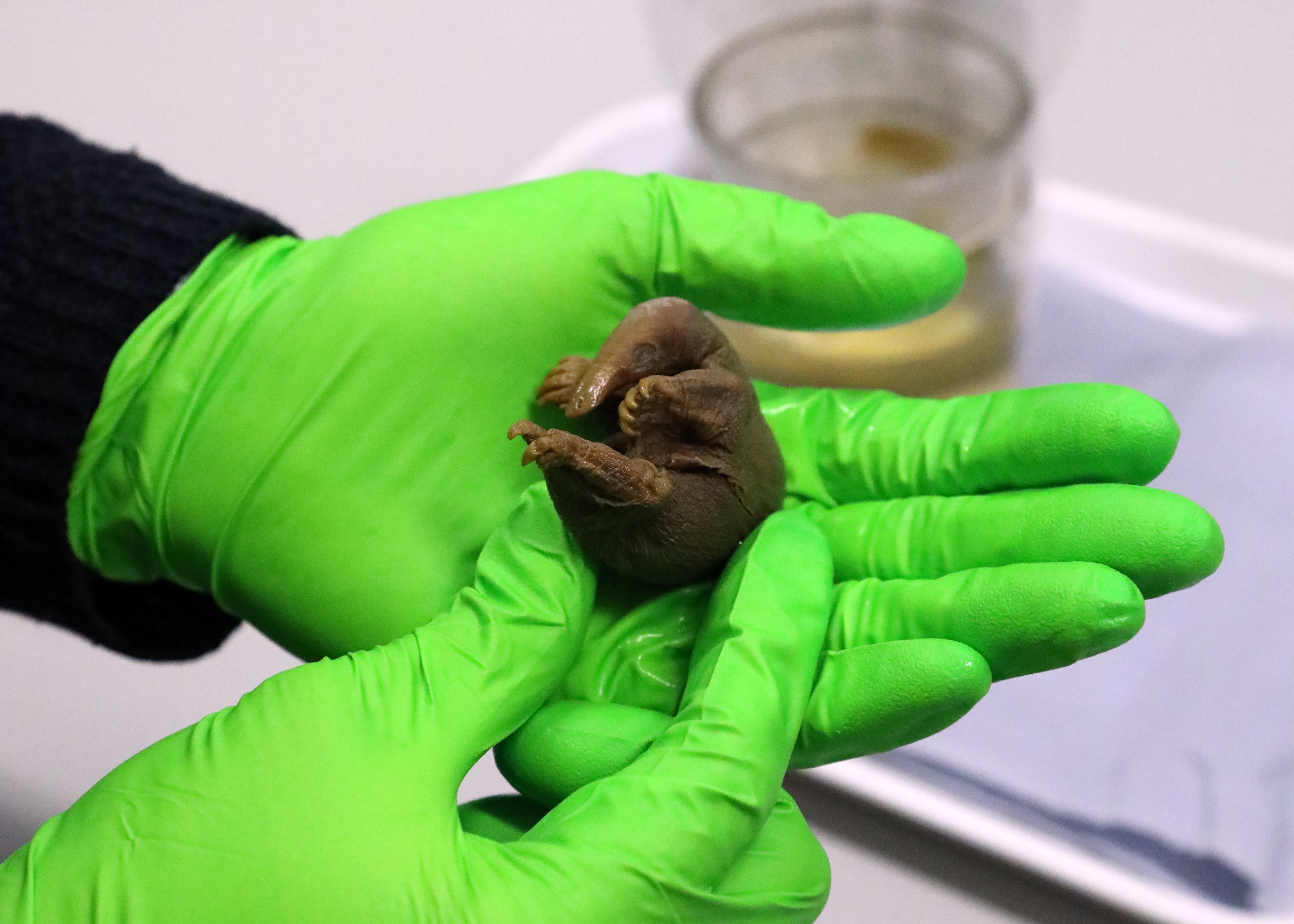Discovered: 150-year-old platypus specimen that proved some mammals lay eggs
Collected in the late 1800s by the scientist William Caldwell, the tiny samples were found in the stores of Cambridge’s University Museum of Zoology.

Your support helps us to tell the story
From reproductive rights to climate change to Big Tech, The Independent is on the ground when the story is developing. Whether it's investigating the financials of Elon Musk's pro-Trump PAC or producing our latest documentary, 'The A Word', which shines a light on the American women fighting for reproductive rights, we know how important it is to parse out the facts from the messaging.
At such a critical moment in US history, we need reporters on the ground. Your donation allows us to keep sending journalists to speak to both sides of the story.
The Independent is trusted by Americans across the entire political spectrum. And unlike many other quality news outlets, we choose not to lock Americans out of our reporting and analysis with paywalls. We believe quality journalism should be available to everyone, paid for by those who can afford it.
Your support makes all the difference.Jars of 150-year-old platypus and echidna specimens that prove some mammals lay eggs have been discovered at an English museum.
Collected in the late 1800s by the scientist William Caldwell, the tiny samples were found in the stores of Cambridge’s University Museum of Zoology.
When they were collected, these specimens were key to proving that some mammals lay eggs, a fact that changed the course of scientific thinking and supported the theory of evolution.
The unique collection had not been catalogued by the museum, so until recently staff did not know it existed.
But to have the physical specimens here, tying us back to that discovery almost 150 years ago, is pretty amazing
It was discovered when Jack Ashby, assistant director at the museum, was doing research for a new book on Australian mammals.
He said: “It’s one thing to read the 19th century announcements that platypuses and echidnas actually lay eggs.
“But to have the physical specimens here, tying us back to that discovery almost 150 years ago, is pretty amazing.”
Mr Ashby added: “I knew from experience that there isn’t a natural history collection on Earth that actually has a comprehensive catalogue of everything in it, and I suspected that Caldwell’s specimens really ought to be here.”
He was right.
Three months after Mr Ashby asked Collections Manager Mathew Lowe to keep an eye out, a small box of specimens was found in the museum with a note suggesting they were Caldwell’s, and Mr Ashby’s investigations confirmed this was the case.
Until Europeans first encountered platypuses and echidnas, spiny anteaters, in the 1790s, it had been assumed that all mammals gave birth to live young.
The question of whether some mammals lay eggs then became hotly debated in scientific circles.
Experts say the newly discovered collection of little jars represents the huge scientific endeavour that went into solving this mystery.
Mr Ashby said: “In the 19th century, many conservative scientists didn’t want to believe that an egg-laying mammal could exist, because this would support the theory of evolution, the idea that one animal group was capable of changing into another.”
He added: “Lizards and frogs lay eggs, so the idea of a mammal laying eggs was dismissed by many people, I think they felt it was degrading to be related to animals that they considered ‘lower life forms’.”
The newly discovered collection includes echidnas, platypuses and marsupials at varying life stages from fertilised egg to adolescence.
William Caldwell was sent to Australia in 1883, with substantial financial backing from the University of Cambridge, the Royal Society and the British Government, to resolve the long-standing mystery.